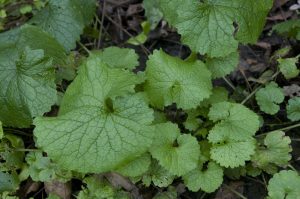Bring in the Hit Squad

Are you struggling with tough invasive like garlic mustard and reed canary grass? This is a great time to put a serious hurt on these super species. It is also among the most economical times to get your revenge.
By now, native plants have gone dormant. The landscape should by and large be brown and tan. For landowners, who are battling any number of exotic weed species, the remaining green is a bitter reminder of their problem.
Fortunately, this green also represents a unique opportunity. Since native plants are safely sleeping beneath the soil, landowners are free to use non-selective herbicides that would otherwise harm beneficial plants. Chief among these is glyphosate, which is cheap and highly effective.
Those living plants that are sprayed now will either be killed outright or severely weakened so that they are unable to survive the stress of winter. By contrast, application made in spring or summer might stress but not kill something like reed canary grass, which could substantially recover before the arrival of winter.
Glyphosate is short lived, breaking down in the soil in just a couple weeks. This means that wildflowers and native grasses that emerge in the spring will be unaffected by fall spraying.
I still avoid broadcast spraying in most situations because it is wasteful. Spot spraying is way easier when your green target weeds stand out so well. This tactic is especially useful in situations where weeds are scattered among more rate native plants I want to protect.
Depending on weather, this window can be short. Snow and hard freezes will force even hearty weeds into dormancy. Herbicides tend to be more readily taken up on warm sunny fall days.
Herbicide needs to be part of an integrated weed management approach that includes management tools like controlled fire, cover crops and mowing. As always, follow label directions to minimize the amount of chemical used while making sure it will do its job.
